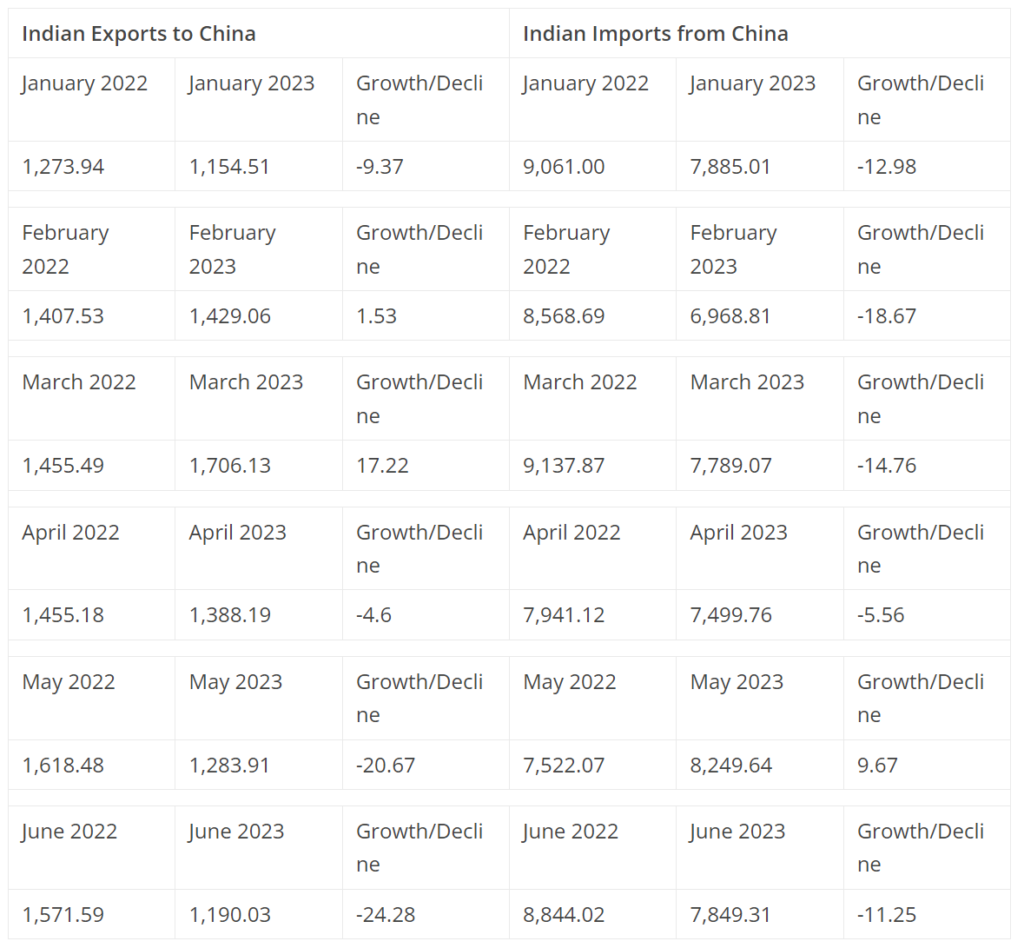Faltering Dragon: Chinese Slowdown, Global Economy And Indian Imperatives – Analysis
China stands as the world’s second-largest economy by nominal GDP and has held the position of the largest economy by purchasing power parity since 2016. With a significant contribution of approximately 19 percent to the global GDP, China’s economic health is not just pivotal for its prosperity but has far-reaching implications for the interconnected global economy.
Of particular note is China’s extensive engagement with South Asian economies grappling with significant macroeconomic challenges – Sri Lanka and Pakistan have faced severe economic downturns. Sri Lanka experienced a pronounced economic collapse in 2022 and became a victim of China’s ‘debt-trap diplomacy’ while Pakistan deals with substantial external debts to China on account of the China-Pakistan Economic Corridor as part of the ambitious Belt and Road Initiative undertaken by the Asian giant.
China’s profound interconnections with most Indo-Pacific nations can be ascribed to its pivotal role within the regional value networks. This primary obstacle hinders countries in this vicinity from achieving diversification in their trade and investment relationships, particularly in shifting away from their reliance on China. For instance, even Australian agricultural products are significantly intertwined with the Global Value Chains (GVCs), with a substantial portion of imports originating from China.
Figure 1: China’s Trade Volume with the major Indo-Pacific countries (in US$ billion)
China’s economic strain and global impacts
China’s economic challenges have manifested in a series of disappointing economic data and downgrades by international financial institutions, painting a picture of a nation grappling with worrisome macroeconomic symptoms. In recent months, China’s post-Covid economic rebound has shown signs of faltering, with youth unemployment surging to an alarming 21.3 percent in June 2023, while the economy grew at just 0.8 percent between the first and second quarters of 2023.
The Chinese economy has been grappling with deflationary pressures, as evidenced by declines in both the Consumer Price Index (CPI) and the Producer Price Index (PPI). The CPI registered a 0.3 percent year-on-year drop in July 2023, marking its first decrease since February 2021. Moreover, the PPI saw its tenth consecutive month of decline, falling by 4.4 percent, surpassing the forecasted 4.1 percent decrease. These figures lay bare the economic strain that China is currently contending with.
The primary contributing factors to China’s current economic condition are its reliance on debt-fuelled investments and an emphasis on the property market rather than focusing on stimulating domestic household consumption. This macroeconomic strategy has led to a delicate balance, and the repercussions are being felt within China’s borders and the global economic landscape. Given these challenges, China’s financial health and subsequent impact on its trading partners, including India, demand careful consideration.
India-China trade dynamics
The previous year witnessed an impressive milestone in India-China trade, as the bilateral trade volume reached a record US$ 135.98 billion. This achievement was reached despite underlying tensions stemming from the military standoff in eastern Ladakh in May 2020. The trade figures from 2022 showcased an 8.4 percent increase, surpassing the US$125-billion mark from the previous year. As this economic partnership thrives, two significant developments merit analysis regarding their macroeconomic impact.
In July 2023, China’s decision to implement export controls on gallium and germanium could potentially create short-term disruptions in India’s industries due to supply chain interruptions. India’s semiconductor plans and industries are particularly vulnerable, which the export controls could impact. Given the widespread use of chips in products such as electronics and automobiles, the resulting surge in prices of gallium and germanium could ripple through the economy, affecting both cost and availability. The long-term effects, however, will be contingent on factors such as domestic semiconductor production capabilities, alternative supply sources and strategic alliances like the India-US Initiative on Critical and Emerging Technology (iCET). These factors collectively contribute to ensuring a stable supply chain for India’s semiconductor sector.
In response, India introduced import restrictions on laptops, tablets, and select computers in August 2023, citing security concerns and aiming to bolster domestic manufacturing. This move, while aligned with the objectives of the ‘Make in India’ initiative, may lead to short-term disruptions. It allows India to enhance domestic production capacities, but the transition period requires careful management to minimise negative impacts.
Table 1: India’s Trade With China (in US$ million)

Navigating the Indian economy
Traditionally, shifts in India-China trade policies have often followed periods of border tensions, like India’s ban on Chinese apps in 2020. However, the present context deviates from this trend. Recent changes in trade policies reflect a strategic approach aimed at counteracting China’s dominant position in global trade. In the absence of recent border disputes, India can recalibrate its trade relationship with China based on economic considerations, fostering a more balanced and mutually beneficial engagement.
India must deploy a multifaceted strategy to recalibrate the trade balance and concurrently strengthen domestic capacities. This approach necessitates diversifying supply chains, nurturing indigenous industries, and cultivating strategic partnerships. By diminishing reliance on Chinese imports, India can insulate itself from potential supply chain disruptions while exercising greater control over critical components. Simultaneously, nurturing domestic capacities aligns with India’s broader goals of self-reliance in manufacturing and sustainable economic growth.
China’s economic challenges transcend borders, creating ripple effects across its trade relationships, especially with nations like India. The surge in India-China trade underscores the significance of their economic partnership, while China’s export controls and India’s measured responses add layers of complexity to the dynamics. Striking a balance between addressing short-term disruptions and pursuing long-term objectives requires prudent decision-making, international collaboration, and proactive economic strategies.
